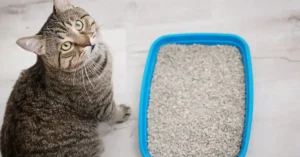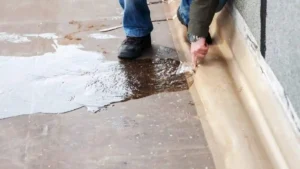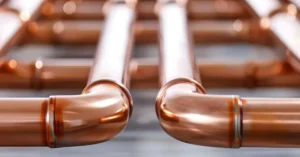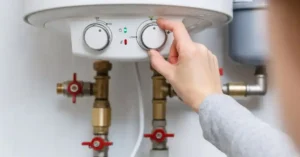Finding out you have a broken sewer line is the kind of problem no homeowner wants to face. This issue is more than a simple clog; it can lead to costly damage, health risks, and a truly unpleasant mess inside and outside your home. We wrote this guide to clearly explain the warning signs, help you act fast, and understand what to do next.
A damaged sewer pipe needs professional attention right away to protect your property and health. Learning the most common signs of a broken sewer line will save you a lot of headaches and money.
The Top 10 Most Common Signs of a Broken Sewer Line
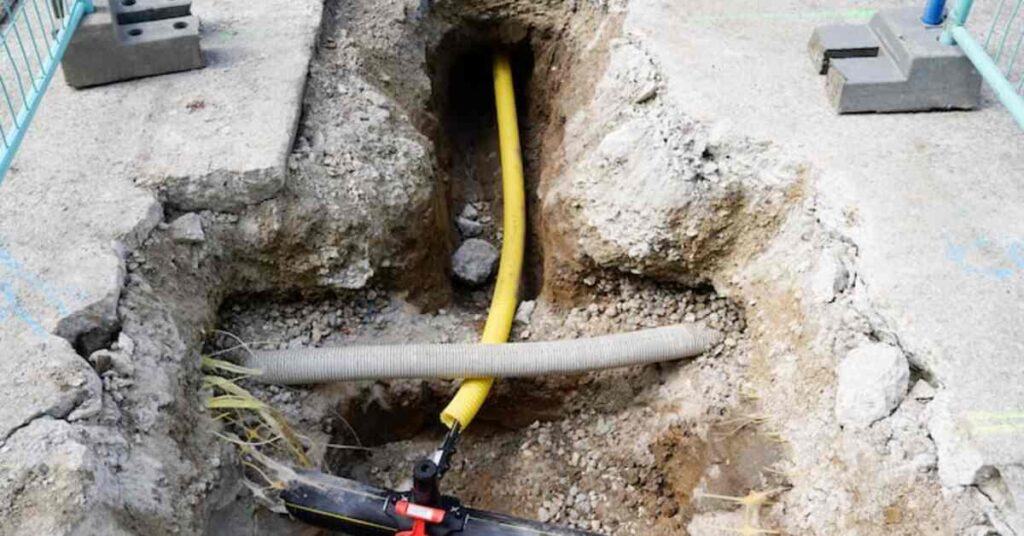
1. Persistent Sewage Odors
A healthy sewer system keeps nasty smells trapped underground. When you smell sewage inside your home or near your foundation, it’s a major warning sign. These odors mean gases are escaping through cracks or breaks in your sewer line.
The smell often starts faint but grows stronger over time. You might notice it near drains, in your basement, or around your yard. Don’t ignore this symptom. Sewer gases contain harmful bacteria and methane that pose health risks.
2. Multiple Slow or Clogged Drains
One slow drain usually means a local blockage. But when several drains back up at once, you’re dealing with broken sewer line symptoms. The main sewer line connects all your home’s drains to the city system.
Watch for toilets that won’t flush properly, bathtubs that drain slowly, and sinks that gurgle. When the damage happens in your main line, every fixture struggles. You might clear one drain only to have another clog immediately.
3. Sewage Backups in Your Home
This is the most obvious and urgent sign of sewer line problems. Raw sewage backing up through drains means complete blockage or severe damage. It usually starts in your lowest drains, like basement floor drains or ground-level toilets.
Sewage backups create serious health hazards. They expose your family to dangerous bacteria and viruses. They also cause extensive water damage to floors, walls, and belongings. This situation requires immediate professional help.
4. Soggy Patches or Pooling Water in Your Yard
Notice wet spots in your yard when it hasn’t rained? A broken sewer line leaks wastewater underground. This creates persistent damp areas or standing water above the damaged pipe section.
These soggy patches often appear along the path from your house to the street. The ground might feel spongy when you walk on it. In severe cases, you’ll see actual puddles that never dry up completely.
5. Unusually Green or Lush Grass Patches
Sewage acts as fertilizer for grass and plants. If you spot an area of your lawn that’s noticeably greener or grows faster than surrounding grass, check for sewer line issues beneath it.
This happens because leaked sewage provides extra nutrients to the soil. The grass above the break grows thick and vibrant while nearby areas look normal. It’s one of the more subtle signs of a broken sewer line that homeowners often miss.
6. Foundation Cracks or Settling
Leaking sewer lines erode soil around and under your foundation. This causes the ground to shift and settle unevenly. You might see new cracks in your foundation walls, uneven floors, or doors that suddenly don’t close right.
Water from a sewer line broken near your foundation is especially dangerous. It weakens the structural support of your entire home. Small foundation cracks can turn into major structural problems quickly.
7. Increased Pest Activity
Rats, insects, and other pests love broken sewer pipes. Even tiny cracks provide entry points for rodents seeking water and shelter. You might notice more rats, mice, or cockroaches around your property.
These pests can travel through damaged pipes and enter your home. They carry diseases and create their own damage. An uptick in pest problems often points to hidden sewer line damage.
8. Mold Growth Inside Your Home
Excess moisture from sewer leaks creates perfect conditions for mold. You might see mold on walls, ceilings, or behind appliances. It often appears in rooms far from obvious water sources.
Mold from sewer leaks is particularly dangerous. It combines with bacteria from wastewater to create serious health problems. Black mold, especially, requires immediate attention and professional remediation.
9. Gurgling Sounds from Drains and Toilets
Strange noises from your plumbing indicate air trapped in the system. When you hear gurgling, bubbling, or glug-glug sounds, it means water isn’t flowing smoothly through your pipes.
These sounds happen when air pockets form due to blockages or breaks. You might hear toilets gurgle when someone uses the sink. Or drains might make noise on their own. These are clear signs of bad sewer pipe conditions developing.
10. Sudden Spike in Water Bills
A broken sewer line doesn’t just leak sewage out. It can also let groundwater seep in. This makes your water meter run constantly, driving up your bills without explanation.
Compare your recent bills to previous months. A significant increase without changed usage patterns suggests hidden leaks. While this could indicate various plumbing issues, paired with other symptoms it points to sewer problems.
What Causes Sewer Lines to Break?
Tree Root Intrusion
Tree roots cause most residential sewer line damage. Roots grow toward moisture sources and can detect water vapor from tiny pipe cracks. Once they find a way in, they expand inside the pipe, causing major blockages and breaks.
Even small ornamental trees can damage sewer lines. Roots can extend far beyond the tree’s canopy, reaching pipes 50 feet away or more. Older clay pipes are especially vulnerable to root penetration.
Aging and Deterioration
Sewer pipes don’t last forever. Clay and cast iron pipes, common in homes built before 1970, typically last 50 to 60 years. After that, they become brittle and prone to cracking.
Corrosion eats away at metal pipes from inside and out. Chemical reactions between waste materials and pipe metals weaken the structure. Even newer PVC pipes eventually wear down from constant use and environmental stress.
Ground Shifting and Settlement
Soil naturally shifts over time due to moisture changes, temperature fluctuations, and ground settling. This movement puts stress on rigid sewer pipes buried underground.
Earthquakes, heavy construction nearby, and changes in the water table accelerate ground movement. When soil shifts, it can bend, crack, or completely separate sewer pipe sections. The joints between pipe segments are particularly weak points.
Extreme Temperature Changes
Freezing temperatures cause water inside pipes to expand. This creates pressure that cracks pipes from the inside. Repeated freeze-thaw cycles weaken even healthy pipes over time.
In warm climates, extreme heat can cause ground expansion that stresses pipes. Temperature swings make soil expand and contract, which shifts pipes out of alignment.
Poor Installation or Low-Quality Materials
Improper installation guarantees future problems. If pipes weren’t laid at the correct slope, waste doesn’t flow properly. Standing water inside pipes accelerates corrosion and attracts tree roots.
Cheap materials fail faster than quality ones. Thin-walled pipes crack more easily. Poorly fitted joints separate under normal stress. Unfortunately, you often can’t tell installation quality until problems appear years later.
Heavy Traffic or Construction Above Pipes
Driving vehicles or heavy equipment over buried sewer lines compresses the soil above them. This pressure can crush older pipes or create stress cracks in newer ones.
Major construction projects near your property create vibrations that damage underground utilities. Even large delivery trucks repeatedly parking in the same spot can eventually damage shallow sewer lines.
What To Do If You Suspect a Broken Sewer Line
Stop Using Water Immediately
When you notice signs sewer line repair is needed, limit water use right away. Every flush, shower, or load of laundry sends more wastewater into damaged pipes. This worsens leaks and increases the risk of sewage backing up into your home.
Turn off washing machines, dishwashers, and other automatic water-using appliances. Use only essential water until professionals assess the situation. This simple step prevents additional damage.
Document the Problems
Take photos and videos of all visible issues. Capture soggy yard areas, foundation cracks, mold growth, and any sewage backups. Write down when you first noticed each problem and how they’ve changed.
This documentation helps plumbers diagnose the issue faster. It’s also valuable for insurance claims if your policy covers sewer line damage. Keep detailed records of any related expenses.
Call a Licensed Plumber
Don’t attempt DIY repairs on sewer lines. Professional plumbers have specialized equipment to locate breaks and assess damage severity. They use video cameras that travel through pipes to pinpoint exact problem locations.
Licensed plumbers also understand local codes and permit requirements. Sewer line repairs often need permits and inspections. Professionals handle this paperwork and ensure repairs meet regulations.
Avoid Chemical Drain Cleaners
Store-bought drain cleaners won’t fix broken pipes. They only temporarily clear minor clogs. Harsh chemicals can actually worsen pipe corrosion and damage. They’re also dangerous if sewage backs up while chemicals are in your pipes.
Professional plumbers use safer, more effective methods. Hydro-jetting uses high-pressure water to clear blockages without chemicals. It’s tough on clogs but gentle on pipes.
Evacuate If Sewage Enters Living Areas
Active sewage backups create immediate health hazards. The bacteria, viruses, and parasites in raw sewage cause serious illnesses. If sewage enters your home, move family members and pets to a safe location.
Contact emergency plumbing services immediately. Don’t try to clean sewage yourself without proper protective equipment and disinfectants. Professional remediation services should handle sewage cleanup.
Check Your Insurance Coverage
Review your homeowner’s insurance policy before damage worsens. Some policies cover sudden sewer line failures but exclude gradual deterioration. Understanding your coverage helps you make informed decisions about repairs.
Many homeowners add sewer line coverage through endorsements or separate policies. If you don’t have coverage, consider adding it after repairs are complete to protect against future issues.
Long-Term Prevention Strategies
Regular Sewer Line Inspections
Schedule video inspections every few years, even without obvious problems. Early detection of small cracks or root intrusion prevents major breaks. Think of it like dental checkups – small cavities are easier and cheaper to fix than root canals.
Homes with older pipes or mature trees nearby benefit from annual inspections. The modest inspection cost pales compared to emergency repair expenses. Prevention always costs less than emergency fixes.
Root Barrier Installation
If trees near your sewer line cause concern, consider root barriers. These physical or chemical barriers redirect roots away from pipes. They’re especially valuable when you can’t remove problematic trees due to property lines or environmental regulations.
Slow-release root treatments also discourage root growth near pipes. These products kill roots that enter pipes while leaving the tree healthy. Professional plumbers can recommend the best option for your situation.
Avoid Flushing Harmful Items
What goes down your drains affects sewer line health. Never flush wipes (even “flushable” ones), feminine products, paper towels, or cleaning rags. These items don’t break down and create clogs that stress pipes.
Cooking grease solidifies in pipes and traps other debris. Coffee grounds, eggshells, and starchy foods contribute to buildup. Use trash cans for these items instead of drains. Good habits extend your sewer line’s life.
Mind Your Landscaping
Choose tree and shrub species carefully when planting near sewer lines. Some species have less aggressive root systems than others. Keep fast-growing trees like willows, poplars, and maples far from sewer lines.
Know where your sewer line runs before digging anywhere in your yard. Call 811 for free utility marking before any project. Accidentally damaging your sewer line with a shovel creates expensive emergency repairs.
You can read about: How Much Does It Cost to Repair Sewer Line
Professional Sewer Line Repair in Los Angeles
When you see signs of a bad sewer pipe, you need a trusted partner with genuine experience. We pride ourselves on offering expert, transparent, and non-destructive solutions for all types of signs of sewer line problems across the Greater Los Angeles area.
At Derks Plumbing, we understand the stress of a sewer line emergency. Our expertise comes from over 20 years of serving the local community. We focus on providing genuine value and long-term fixes, not quick, temporary patches.
We start every suspected line issue with a state-of-the-art camera inspection to give you a clear, honest assessment. We then walk you through the best repair options, whether it’s a targeted traditional repair or a less invasive trenchless solution. Our goal is to fix the problem permanently while protecting your property. For reliable services of Sewer Line Repair Near Eagle Rock, and surrounding areas, trust our certified, local experts.
Conclusion
Recognizing the signs of a broken sewer line protects your home and wallet. Sewage odors, multiple slow drains, soggy yard spots, and foundation cracks all demand immediate attention. These aren’t problems that fix themselves or improve with time.
Early detection saves thousands in repair costs and prevents health hazards. Modern repair methods minimize disruption to your property. When you spot warning signs, contact licensed professionals immediately. Don’t wait until sewage backs up into your home or your foundation develops serious damage.
Regular maintenance and smart prevention extend your sewer line’s life. Schedule inspections, watch what goes down drains, and address small problems before they become disasters. Your sewer system works hard every day give it the attention it deserves.
FAQs
Q1: Is a broken sewer line an emergency?
A: Yes, it often is. While a slow drain is a low-level emergency, a raw sewage backup or a collapsing pipe under your foundation is a serious health and structural emergency. You should stop using water right away and call a professional plumber immediately to prevent costly damage.
Q2: How much does a sewer line repair cost?
A: The cost varies widely based on the location of the break, the depth of the pipe, the material of the pipe, and the repair method used. A small, accessible crack might cost less than a full line replacement requiring extensive excavation. A camera inspection is necessary to get an accurate estimate.
Q3: How long does a sewer line repair take?
A: It depends on the repair method. A traditional excavation and replacement can take 3 to 5 days, depending on the length of the pipe and the need for new concrete or landscaping. Trenchless pipe lining or pipe bursting is often completed much faster, sometimes in just 1 to 2 days, because it involves minimal digging.
Q4: Can I prevent tree roots from damaging my sewer line?
A: Yes, through several methods. Install physical root barriers between trees and pipes. Use chemical root treatments that discourage growth near sewer lines. Choose tree species with less aggressive roots when landscaping. Schedule regular video inspections to catch root intrusion early, before major damage occurs.


